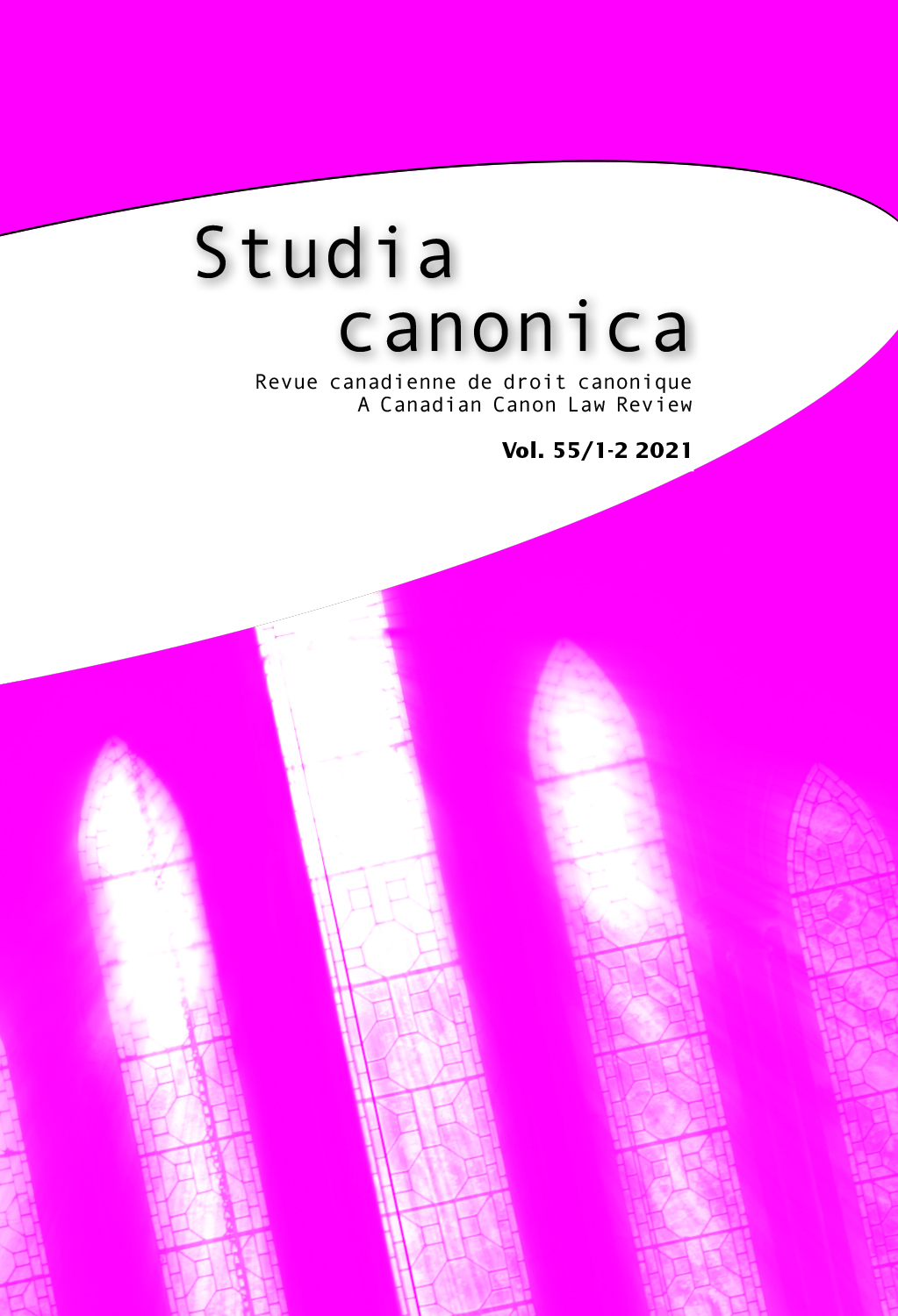 previous article in this issue previous article in this issue | next article in this issue  |

|
Document Details : Title: Separation of Spouses Propria Auctoritateand the Nature of Ecclesiastical Intervention Author(s): ST. LOUIS SANCHEZ, Anthony Journal: Studia Canonica Volume: 48 Issue: 2 Date: 2014 Pages: 493-530 DOI: 10.2143/STC.48.2.3049201 Abstract : This demonstrates that a Catholic spouse is lawfully able to separate by his or her own authority (propria auctoritate) in the case of certain adultery without having to have any recourse to the ecclesiastical authorities. It begins with an historical introduction in which the history of the development of the juridic institute of separation of spouses is revealed. Separation propria auctoritate was certainly the practice in the early Church. However, as the Church gained jurisdiction over marriage, separation was deemed to be within the sole competence of the ecclesiastical authorities. Nevertheless, the practice of separation propria auctoritate remained and was even incorporated into the canonical doctrine in the case of adultery and danger of delay. After the Second Vatican Council, a pastoral approach to separation came to dominance which sought to eliminate the harsh and even penal character of separation. With the 1983 codification of canon law, this pastoral approach made the nature of separation propria auctoritate unclear. Through an analysis of the discussions of the coetus for the revision of the law, it can be demonstrated that the 1983 CIC did not substantially change the institute of separation. In fact, separation propria auctoritate in the case of adultery is a private juridic act which suspends the rights and obligations of marriage. Therefore, no ecclesiastical decree or sentence is required. Nevertheless, the 1983 CIC requires the permission of the diocesan bishop before the spouses can approach the civil forum for a divorce. L’A. s’attache à démontrer qu’un époux catholique est légalement capable de se séparer de son conjoint ou de sa conjointe de sa propre autorité (propria auctoritate) et de s’adresser au forum civil pour obtenir un divorce sans devoir, pour cela, être tenu(e) de recourir de quelque façon que ce soit aux autorités ecclésiastiques. L’article commence par une introduction à l’évolution historique de l’institut juridique de la séparation des époux. La séparation des époux propria auctoritate se pratiquait assurément dans l’Église primitive. Ceci étant dit, au fur et à mesure que l’Église étendait sa juridiction au domaine matrimonial, on s’est mis à considérer que la séparation des époux relevait de la compétence exclusive des autorités ecclésiastiques. La pratique de la séparation propria auctoritate subsistait néanmoins au point, même, d’être incorporée à la doctrine canonique de l’adultère et du danger de retard. Après Vatican II, une certaine approche pastorale a commencé à s’affirmer. Elle témoignait d’un effort visant à éliminer le caractère dur, voire pénal, de la séparation. Avec la codification du droit canonique, en 1983, cette approche pastorale a eu pour effet d’obscurcir la nature même de la séparation propria auctoritate. Une analyse des discussions du coetus chargé de la révision du droit permet de démontrer que le CIC de 1983 n’a pas substantiellement modifié l’institut de la séparation. En fait, la, séparation propria auctoritate en cas d’adultère constitue un acte juridique privé qui a pour effet de suspendre les droits et obligations du mariage. En conséquence, aucune sentence ou décret ecclésiastique n’est requis. Cependant, le CIC de 1983 CIC exige des époux qu’ils obtiennent la permission de l’évêque diocésain avant d’adresser une demande de divorce au forum civil. |
|
